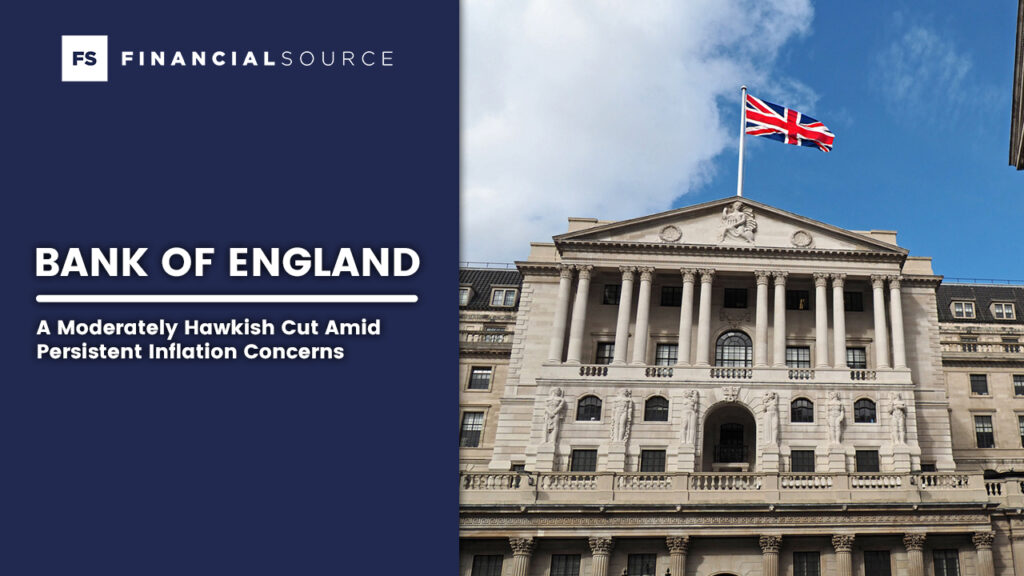Bank of England: A Moderately Hawkish Cut Amid Persistent Inflation Concerns

On November 7, the Bank of England cut the Bank Rate by 25 basis points to 4.75%, marking a cautious step towards easing monetary policy. The 8-1 vote reflected some division within the committee, with a slight surprise as only Mann dissented in favor of holding rates steady, where markets had anticipated a 7-2 split. This signals a “gradual approach” to rate cuts, consistent with Governor Bailey’s commitment to keeping policy sufficiently restrictive until inflation aligns with the Bank’s 2% target.
Governor Bailey underscored that the easing cycle would proceed slowly and cautiously, mindful of recent inflationary pressures that could prolong the restrictive rate environment. Notably, inflation forecasts have been revised upwards, with projections for 2025 now at 2.75% (up from 2.25%), suggesting the Bank expects inflation to remain stickier for longer. This upward adjustment in inflation forecasts, combined with a tempered growth outlook, reflects the BoE’s concern over the durability of inflationary pressures.
Key Takeaways from the BoE’s Latest Forecasts:
- Inflation: Revised higher for the medium term, with 2025 forecasted at 2.75% compared to the prior 2.25%.
- Growth: Revised lower, with 2024 growth now projected at 1% (down from 1.25%)..
This tempered yet persistent inflation outlook provided a slight lift to GBP/USD, while Gilt futures dipped modestly. The market appears to be interpreting the BoE’s stance as moderately hawkish, given the Bank’s reluctance to aggressively pursue cuts amid lingering inflation risks.
Bailey’s Focus on Services Inflation and Budget Implications
In the press conference, Bailey pointed to services inflation as a critical component for achieving the 2% CPI target. The recent data showed annual services inflation easing to 4.9%, the lowest since May 2022, but still above the BoE’s threshold. This focus on service price pressures highlights the BoE’s emphasis on bringing down core inflation as part of its broader strategy.
Bailey also noted that the upcoming UK budget will be carefully analyzed for its inflationary impact, though he indicated that it is premature to assume the budget will significantly alter the path of interest rates. Nevertheless, the BoE remains watchful, with Bailey signaling that incoming CPI, labor, and GDP data will be pivotal in determining the pace and extent of future rate cuts.
In summary, while the BoE has initiated a slow path to easing, the underlying message remains clear: inflationary pressures, particularly in services, require vigilance. With the latest inflation revisions pointing to stickiness in price levels, the Bank appears poised for a gradual descent in rates rather than an aggressive easing cycle. This approach keeps the GBP under moderate support as the BoE walks the line between fostering growth and curbing inflationary persistence.
Market Implications
As the BoE navigates this tightening-easing balance, all eyes will be on upcoming CPI, labor, and growth data to gauge if the Bank will pivot faster or continue its gradual path in 2024.